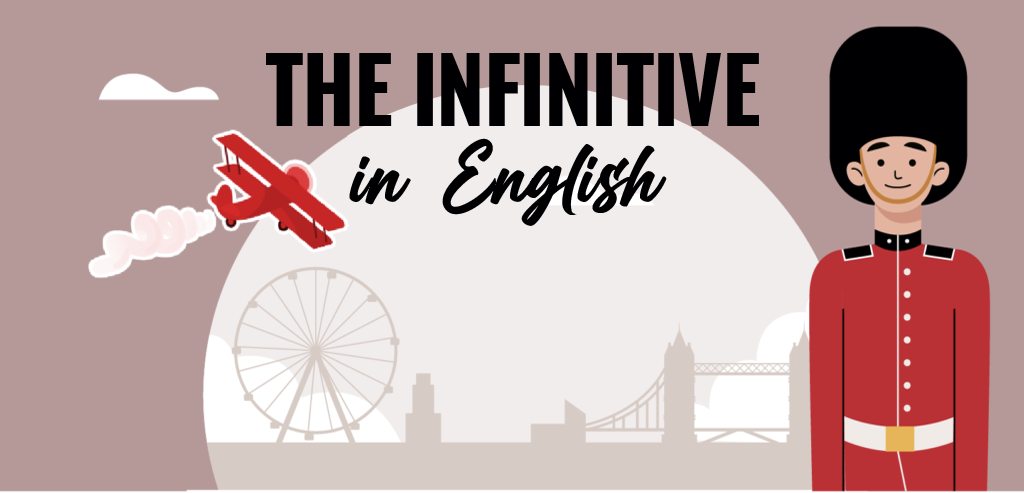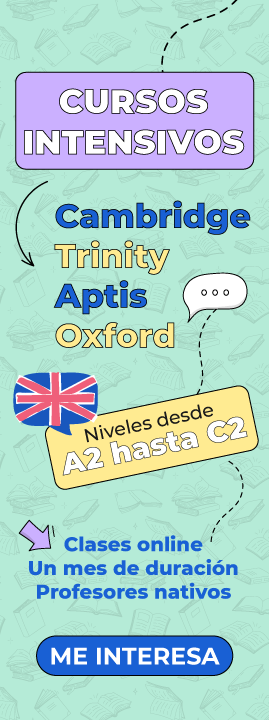The infinitive in English

The infinitive is in many languages (as in Spanish) the form used to enunciate a verb, and therefore the one that appears as a dictionary entry or motto. Examples of the infinitive in Spanish are: Wanting is power. Eating and scratching are all starting.
ÍNDICE DE CONTENIDOS
The infinitive is the base form of a verb. In English, when we talk about the infinitive, we usually refer to the present infinitive, which is the most common. The present infinitive has two forms: the to-infinitive = to + base. the zero infinitive = base. the a-infinitive = a + base. The infinitive zero = base.
Infinitive functions
The functions of infinitive verbs in the sentence are very varied since they are the same as the functions of a noun: they can act as a subject, as a complement to the verb, or as a modifier of a noun, an adjective, or an adverb.
For example:
- Travelling is part of the holidays.
Viajar es parte de las vacaciones.
Most of the time, you will use a verb in a variety of other forms, but sometimes you can use it in this simpler basic form as well. Here are some of the main ways to do it:
An infinitive is the verb form to +. To describe someone’s purpose, use an infinitive.
- What do you use a hair dryer for? / (¿Para qué usas un secador de pelo?).
- I use a hair dryer to dry my hair. / (Utilizo un secador de pelo para secarme el pelo).
- Why did you go to the store? / (¿Por qué fuiste a la tienda?).
- I went to the store to buy some milk. / (Fui a la tienda a comprar leche).
- Why are you going to Toronto? / (¿Por qué vas a Toronto?).
- I‘m going to Toronto to learn English (Voy a Toronto a aprender inglés).
The infinitive as a noun
Sometimes the infinitive form of a verb is not used as a normal verb, but rather as a noun. You do this by making the infinitive the subject or object of the sentence.
Examples
- She likes to run.
Le gusta correr.
In this example, the infinitive form “run” is the object of the verb “likes”.
- To paint was his dream.
Pintar era su sueño.
In this example, the infinitive “paint” is the subject of the verb “was”.
Using the infinitive to show purpose
Another way to use the infinitive is to use to “a” instead of a common phrase like in order to ” in order to “. I would do this to show that there is a goal or reason for doing that particular verb.
- We left earlier to miss the rush hour traffic.
“Salimos antes para perder el tráfico de la hora punta”.
In this example , the infinitive to miss “perder” is used to say we left earlier in order to miss the rush hour traffic . ”salimos antes para perder el tráfico de la hora pico”.
You can also use the infinitive to show your intention, after a verb that implies saying something. Verbs like “agree”, “promise” and “decide” “accept”, “promise” and “decide” can use the infinitive form.
Examples:
- She agreed to share the money between them.
“Ella accedió a compartir el dinero entre ellos”.
- He decided to change schools.
“Decidió cambiar de escuela”.
Infinitives after an adjective
You can also use the infinitive form after some adjectives, to give an explanation of the sentiment of the particular adjective. Some of these adjectives include : “happy”, “surprised”, “proud”, “eager” “happy”, “surprised”, “proud”, “anxious” – there are many more! To decide whether or not to use the infinitive, think about whether it is being used to give an opinion or explanation, or not.
- She was happy to see him come home.
Ella estaba feliz de verlo volver a casa.
* The infinitive to see “see” gives an explanation of why he was happy.
- She thought it was easy to learn a new language.
Ella pensó que era fácil aprender un nuevo idioma”.
* Here, the infinitive to learn “learn” expresses your opinion that learning a language was easy.
Infinitive with adverbs
The infinitive with “to” is frequently used with the adverbs “too” and “enough” to express the reasoning behind our satisfaction or dissatisfaction. Normally, the infinitive with “to” and everything that follows can be eliminated without the sentence ceasing to be grammatically functional.
Finally, the infinitive can perform these functions in the sentence
Subject
It is someone or something of which something expressed by the predicate is affirmed
- Hearing his words scared me.
Oír sus palabras me asustó.
Attribute
It is a word or group of words that is used together with a copulative verb (to be, to be) or semicopulative (to seem) and expresses the qualities of the subject.
- Buying so many useless things is wasting money.
Comprarse tantas cosas inútiles es tirar el dinero.
Complement of the name (also of the adjective or adverb)
It is a word that accompanies the name (adjective or adverb) to specify or expand its meaning.
- I don’t understand your mania for listening to this song ten times a day.
No entiendo tu manía de escuchar esta canción diez veces al día.
Direct object (also called direct object or implement)
It accompanies the transitive verbs, complements their meanings, and is never accompanied by any prepositions, the only exception is the preposition “a” that is used with people.
- I need to buy that book.
Necesito comprarme aquél libro.
Diet supplement (also called a supplement)
It accompanies the verbs, completes their meanings, and is always accompanied by a preposition
- I was trying to explain the position.
Trataba de explicar la posición.
Predicative complement
It is a word that does not refer only to the verb but also to the name and complete meanings of the two.
- This afternoon we saw her leave.
Esta tarde la hemos visto salir.
Circumstantial complement
It is a word or group of words that says in what situation the action expressed by the predicate takes place.
- You can’t tell them everything without thinking.
No puedes decírselo todo sin pensar.



